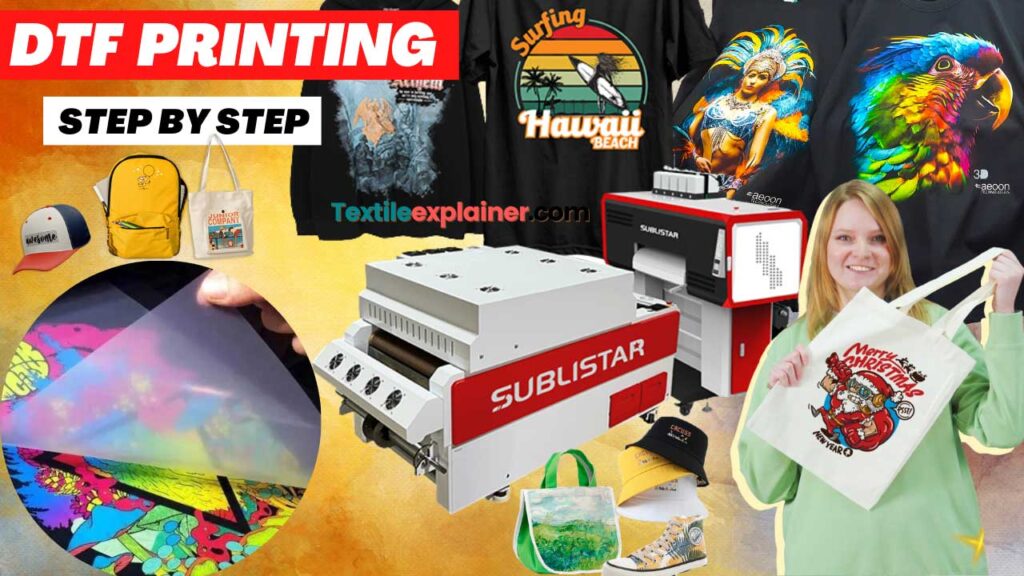Innovative DTF Printing Solutions: Boost Your Clothing with Direct-to-Film Technology
Innovative DTF Printing Solutions: Boost Your Clothing with Direct-to-Film Technology
Blog Article
Mastering DTF Printing: Tips and Techniques for Getting Vibrant and Long Lasting Prints
Worldwide of textile printing, accomplishing sturdy and vivid prints is a desirable ability that can boost the quality of your result. Mastering DTF (Straight to Film) printing needs a mix of technological understanding, precision, and interest to information. From selecting the ideal materials to tweak print setups and refining post-printing completing techniques, there are countless variables that can influence the result of your prints. Understanding just how to navigate these intricacies can make all the distinction between an average result and a really exceptional one.

DTF Printing Basics
For those brand-new to the world of fabric printing, comprehending the principles of DTF printing is important to mastering this innovative method. Straight to Movie (DTF) printing is a contemporary technique that includes transferring styles from an unique movie onto different fabrics using a warmth press. Unlike typical techniques like display printing, DTF uses benefits such as lively shades, intricate detailing, and the ability to publish on varied products like cotton, polyester, and blends.
The process begins by publishing the design on a special DTF movie utilizing a compatible printer with CMYK or CMYKW ink collections. When the style is published, it is then treated with a heat press to produce a durable and durable print. DTF printing is known for its capability to duplicate complex designs with high accuracy and color precision, making it a prominent choice for businesses aiming to develop custom garments, marketing things, and a lot more.
Selecting the Right Materials

The adhesive powder acts as a bonding agent in between the published layout and the material, so it needs to have solid attachment residential properties to make sure a resilient and resilient transfer. By carefully picking the best products for DTF click over here printing, printers can boost the quality, vibrancy, and longevity of their prints.
Enhancing Print Setups
When intending to attain the most effective outcomes in DTF printing, careful attention to enhancing print settings is critical for guaranteeing premium and exact transfers onto textiles. When enhancing print settings is the resolution, one vital facet to consider. Higher resolutions typically cause sharper and a lot more detailed prints, enhancing the general top quality of the transfer. Furthermore, adjusting the ink density can aid ensure and attain vivid colors that the layout stands apart on the textile.
While boosting the speed can improve effectiveness, it might jeopardize the final print's clarity and shade saturation. Exploring with different speeds and observing the results can assist establish the optimum setting for each print work.
Moreover, tweak color profiles and guaranteeing correct shade administration are necessary for achieving accurate and regular shades throughout different prints. By adjusting shade setups and accounts, printers can minimize color deviations and create uniform results, improving the overall print high quality and client complete satisfaction.
Preparing Artwork for DTF Printing
Transform the artwork to CMYK color setting to guarantee that the shades translate properly from display to print. Bear in mind to mirror the last layout prior to publishing to make certain that it transfers correctly onto the garment. By complying with these steps and paying close focus to the details, you can prepare art work that is optimized for vivid and long lasting DTF prints.
Post-Printing Finishing Techniques
Carrying out effective post-printing completing methods is vital to enhancing the longevity and aesthetic appeal of DTF prints on fabrics. Once the printing procedure is full, using warm to the published design is essential.
When the discover here film is gotten rid of, the print might need extra healing time to further establish the ink into the material. This action assists boost the washability and durability of the print, guaranteeing it can withstand multiple clean cycles without fading or splitting.
Additionally, trimming any kind of excess movie around the design can give you could try this out the last print a clean and professional look. Taking the time to correctly finish DTF prints post-printing can considerably influence the general quality and longevity of the textile design.

Conclusion
Finally, grasping DTF printing needs a comprehensive understanding of the fundamentals, selecting suitable products, maximizing print settings, preparing artwork efficiently, and utilizing post-printing ending up methods. By complying with these techniques and suggestions, one can achieve dynamic and sturdy prints that satisfy their wanted top quality requirements. Consistent practice and attention to information are necessary in achieving effective results in DTF printing.
From selecting the best materials to tweak print setups and developing post-printing finishing methods, there are various elements that can affect the outcome of your prints. Unlike traditional methods like display printing, DTF uses benefits such as vibrant shades, intricate outlining, and the capability to publish on diverse products like cotton, polyester, and blends.
As soon as the design is printed, it is then cured with a warmth press to create a long lasting and resilient print.When aiming to accomplish the best outcomes in DTF printing, careful focus to optimizing print settings is important for ensuring high-quality and exact transfers onto textiles.In verdict, grasping DTF printing needs a comprehensive understanding of the essentials, picking proper materials, maximizing print settings, preparing artwork effectively, and utilizing post-printing finishing strategies.
Report this page